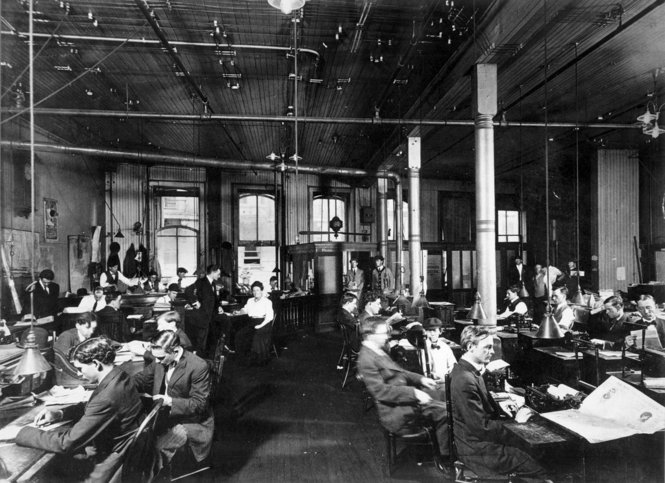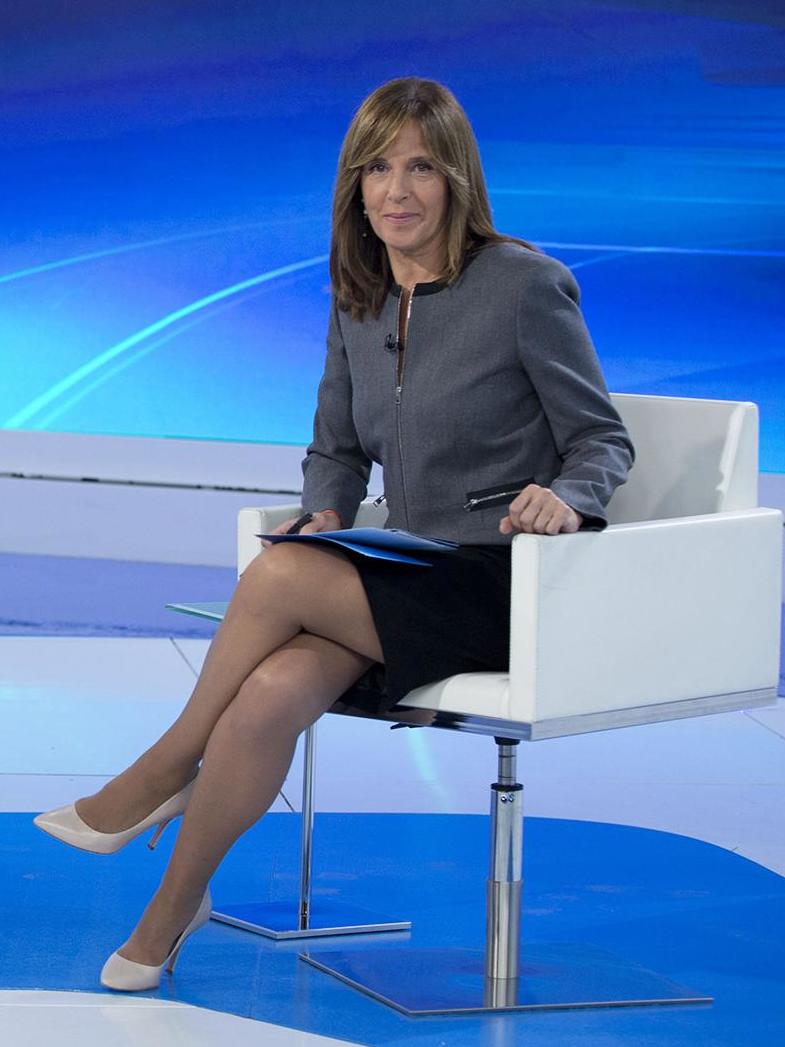|
Prado Del Rey (studios)
Prado del Rey is the central headquarters of Radiotelevisión Española (RTVE), the Spanish state-owned public broadcasting corporation, and the main production center for its subsidiaries Televisión Española (TVE) and Radio Nacional de España (RNE). The complex is in Pozuelo de Alarcón (Madrid). History Prado del Rey was inaugurated on 18 July 1964 to replace the first Televisión Española headquarters located at Paseo de la Habana in Madrid. It was opened by Francisco Franco and the then-Minister of Information and Tourism, Manuel Fraga. with three studios already in operation and another six studios under construction. Studio 1 had an area of 1,200 square meters, which made it the largest studio in Europe at the time. Shows and fiction production was soon transferred there, but the news program ''Telediario'' and its news services were not transferred until 1967. In 1971, Radio Nacional de España headquarters was moved to an annex building named Casa de la Radio. On 13 ... [...More Info...] [...Related Items...] OR: [Wikipedia] [Google] [Baidu] |
Pozuelo De Alarcón
Pozuelo de Alarcón () is a municipality in the Community of Madrid, Spain. Bordering the Moncloa-Aravaca district of Madrid proper to its west, Pozuelo de Alarcón is surrounded by large Mediterranean pine-tree forests: the Casa de Campo, the Monte del Pardo, and the Monte del Pilar. , it ranks as the wealthiest municipality in Spain. La Finca, an isolated luxury residential area known by its affluent residents, most notably football players, lies within the municipality bounds. History Pozuelo has become a low-density residential area during recent decades, as new residential developments have spread over formerly agricultural lands. New transportation infrastructure is approved by the local government. Notable infrastructure developments include the M-40 (the second, counting outwards, of Madrid's ring motorways) and the new 'Metro Ligero' (light rail) line ML2 of the Madrid metro system, which was built in summer 2007 to connect Pozuelo with the Aluche district in the cit ... [...More Info...] [...Related Items...] OR: [Wikipedia] [Google] [Baidu] |
Buildings And Structures In Pozuelo De Alarcón
A building, or edifice, is an enclosed structure with a roof and walls standing more or less permanently in one place, such as a house or factory (although there's also portable buildings). Buildings come in a variety of sizes, shapes, and functions, and have been adapted throughout history for a wide number of factors, from building materials available, to weather conditions, land prices, ground conditions, specific uses, prestige, and aesthetic reasons. To better understand the term ''building'' compare the list of nonbuilding structures. Buildings serve several societal needs – primarily as shelter from weather, security, living space, privacy, to store belongings, and to comfortably live and work. A building as a shelter represents a physical division of the human habitat (a place of comfort and safety) and the ''outside'' (a place that at times may be harsh and harmful). Ever since the first cave paintings, buildings have also become objects or canvasses of much artistic ... [...More Info...] [...Related Items...] OR: [Wikipedia] [Google] [Baidu] |
El País
''El País'' (; ) is a Spanish-language daily newspaper in Spain. ''El País'' is based in the capital city of Madrid and it is owned by the Spanish media conglomerate PRISA. It is the second most circulated daily newspaper in Spain . ''El País'' is the most read newspaper in Spanish online and one of the Madrid dailies considered to be a national newspaper of record for Spain (along with '' El Mundo'' and '' ABC)''. In 2018, its number of daily sales were 138,000. Its headquarters and central editorial staff are located in Madrid, although there are regional offices in the principal Spanish cities (Barcelona, Seville, Valencia, Bilbao, and Santiago de Compostela) where regional editions were produced until 2015. ''El País'' also produces a world edition in Madrid that is available online in English and in Spanish (Latin America). History ''El País'' was founded in May 1976 by a team at PRISA which included Jesus de Polanco, José Ortega Spottorno and Carlos Mendo. ... [...More Info...] [...Related Items...] OR: [Wikipedia] [Google] [Baidu] |
Informe Semanal
''Informe Semanal'' ( ''Weekly Report'') is a weekly Spanish television news magazine broadcast on La 1 of Televisión Española (TVE). Debuting on 31 March 1973, it is the second longest-running national television program in the history of television in Spain, just behind the daily newscast '' Telediario'', on air since 15 September 1957; and the third overall just behind TVE's Canary Islands regional musical program ''Tenderete'', on air since 7 September 1971. ''Informe Semanal'' is produced by Televisión Española news services and besides on La 1, it is broadcast on 24 Horas news channel, on TVE Internacional and on RTVE Play. Previous editions are also available on the online platform on demand. With years on air, it is referred as the milestone television news magazine in Europe and it is Televisión Española's most awarded program. Format The program's format is based on the American program ''60 Minutes'' from CBS, that consists of four reports about themes a ... [...More Info...] [...Related Items...] OR: [Wikipedia] [Google] [Baidu] |
24 Horas (Spanish TV Channel)
Canal 24 Horas (, ''Channel 24 Hours'') is a Spanish free-to-air television channel owned and operated by Televisión Española (TVE), the television division of state-owned public broadcaster Radiotelevisión Española (RTVE). It is the corporation's all-news television channel, and is known for its 24-hour rolling news service and its live coverage of breaking news. It was launched on 15 September 1997 as the first 24-hour rolling television news service in Spain. It was the only one until 27 January 1999, when CNN+ started broadcasting. When CNN+ ceased transmissions on 28 December 2010, Canal 24 Horas became the only nationwide rolling television news service. Its rolling news service is produced by TVE's news services at its Torrespaña facilities, at the foot of the communications tower. News items are produced, with the footage taken by their own cameramen, by the central newsroom in Torrespaña, by the newsrooms of TVE territorial centers across Spain, by TVE foreign ... [...More Info...] [...Related Items...] OR: [Wikipedia] [Google] [Baidu] |
Newsroom
A newsroom is the central place where journalists—reporters, editors, and producers, associate producers, news anchors, news designers, photojournalists, videojournalists, associate editor, residence editor, visual text editor, Desk Head, stringers along with other staffers—work to gather news to be published in a newspaper, an online newspaper or magazine, or broadcast on radio, television, or cable. Some journalism organizations refer to the newsroom as the city room. Print publication newsrooms In a print publication's newsroom, reporters sit at desks, gather information, and write articles or stories, in the past on typewriters, in the 1970s sometimes on specialized terminals, then after the early 1980s on personal computers or workstations. These stories are submitted to editors, who usually sit together at one large desk, where the stories are reviewed and possibly rewritten. Reporters generally used the inverted pyramid method for writing their stories, alt ... [...More Info...] [...Related Items...] OR: [Wikipedia] [Google] [Baidu] |
Master Control
Master control is the technical hub of a broadcast operation common among most over-the-air television stations and television networks. It is distinct from a production control room (PCR) in television studios where the activities such as switching from camera to camera are coordinated. A transmission control room (TCR) is usually smaller in size and is a scaled down version of centralcasting. Master control is the final point before a signal is transmitted over-the-air for terrestrial television or cablecast, satellite provider for broadcast, or sent on to a cable television operator. Television master control rooms include banks of video monitors, satellite receivers, videotape machines, video servers, transmission equipment, and, more recently, computer broadcast automation equipment for recording and playback of television programming. Master control is generally staffed with one or two master control operators around-the-clock to ensure continuous operation. Mas ... [...More Info...] [...Related Items...] OR: [Wikipedia] [Google] [Baidu] |
Torrespaña
Torrespaña (literally "Spain Tower") is a steel-and-concrete television tower located in Madrid, Spain. National terrestrial television channels RTVE, Telecinco and Antena 3, as well as the autonomous channel Telemadrid, along with a few radio stations, broadcast from the tower. The tower was built in 1982, commemorating the FIFA World Cup played in Spain that year. The building was administered by RTVE until 1989 when control over radio and television emissions in Spanish territory was given to Retevisión. It is generally known in Madrid as the " Pirulí", given the similarity between the tower and a particular type of lollipop A lollipop is a type of sugar candy usually consisting of hard candy mounted on a stick and intended for sucking or licking. Different informal terms are used in different places, including lolly, sucker, sticky-pop, etc. Lollipops are ava ... of conical shape very popular in Spain in the eighties. Located in a depression, next to the M30 ... [...More Info...] [...Related Items...] OR: [Wikipedia] [Google] [Baidu] |
Telediario
''Telediario'' (''Tele-journal'') is the flagship television newscast produced by Televisión Española (TVE), the television division of Spanish state-owned public broadcaster Radiotelevisión Española (RTVE). It is the longest running program in the history of television in Spain as it has been broadcast daily since 15 September 1957. Three ''Telediario'' editions a day are produced by Televisión Española news services and are simulcast live on La 1, on 24 Horas news channel, on TVE Internacional and on RTVE Play. Previous editions are also available on their online platform on demand. Additional international editions are also produced and aired on TVE Internacional every day. TVE's territorial centers in every autonomous community produce and broadcast in regional variations in each of them, a shorter midday local newscast, each one with a different name, following the format and visual identity of ''Telediario''. History Televisión Española was established at ... [...More Info...] [...Related Items...] OR: [Wikipedia] [Google] [Baidu] |
Manuel Fraga
Manuel Fraga Iribarne (; 23 November 1922 – 15 January 2012) was a Spanish professor and politician in Francoist Spain, who was also the founder of the People's Party. Fraga was Minister of Information and Tourism between 1962 and 1969, Ambassador to the United Kingdom between 1973 and 1975, Minister of the Interior in 1975, Second Deputy Prime Minister between 1975 and 1976, President of the People's Alliance/People's Party between 1979 and 1990 and President of the Regional Government of Galicia between 1990 and 2005. He was also a Member of the Congress of Deputies and a Senator. Fraga's career as one of the key political figures in Spain straddles both General Francisco Franco's regime and the subsequent transition to representative democracy. He served as the President of the Regional Government of Galicia from 1990 to 2005 and as a Senator until November 2011. Fraga is also one of the Fathers of the Constitution. Biography Early life Fraga was born in Vilalba, Lug ... [...More Info...] [...Related Items...] OR: [Wikipedia] [Google] [Baidu] |
Community Of Madrid
The Community of Madrid (; es, Comunidad de Madrid ) is one of the seventeen autonomous communities of Spain. It is located in the centre of the Iberian Peninsula, and of the Central Plateau (''Meseta Central''). Its capital and largest municipality is the City of Madrid, which is also the capital of the country. The Community of Madrid is bounded to the south and east by Castilla–La Mancha and to the north and west by Castile and León. It was formally created in 1983, based on the limits of the province of Madrid, which was until then conventionally included in the historical region of New Castile. The Community of Madrid is the third most populous in Spain with 6,661,949 (2019) inhabitants mostly concentrated in the metropolitan area of Madrid. It is also the most densely populated autonomous community. In absolute terms, Madrid's economy has been, since 2018, slightly bigger in size than that of Catalonia. Madrid has the highest GDP per capita in the country. It cont ... [...More Info...] [...Related Items...] OR: [Wikipedia] [Google] [Baidu] |





